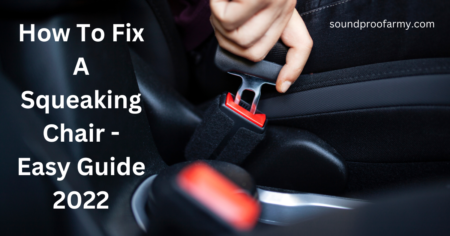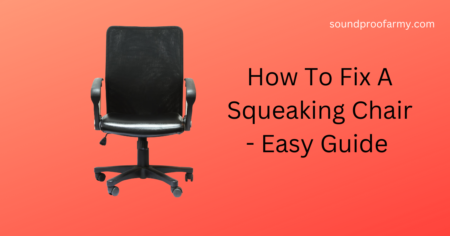Wind Noise is always annoying when it enters the inside car and ruins your calm journey on the road. You must be wondering, how to reduce wind noise in car at high speed.
Quick hacks to reduce wind noise in cars at high speed are to replace the worn-out door weatherstripping/seals, Seal cracks and holes, and Install wind deflectors and Window sealants.
There are many different ways to reduce wind noise in your vehicle while driving at high speed and we will explore them all in this blog post. We will also discuss some of the most common causes of wind noise ranging from worn-out weather stripping to a car’s aerodynamics. Let’s explore them all.
Table of Contents
What causes wind noise in cars?
All cars experience wind noise to a certain level and it is directly linked to the speed of the car. Of many factors that play their role, aerodynamics, air pressure and weatherstripping are the most important ones.
Remember, when you are hurtling along at 70+ MPH, you’re going to be experiencing some serious wind resistance, and therefore the noise. You can mitigate the noise but not block it completely unless you are using ear plugs.
Aerodynamics or design of the car
Aerodynamics is a science that studies the motion of air and how it affects solid objects.
The reason why wind noise happens in cars is that when you drive your car at high speed, there’s a lot of turbulence created by its shape.
As this turbulent airflow passes over the windshield, roof, or even undercarriage parts such as doors and bumpers, these areas generate noise that becomes amplified inside your vehicle cabin due to a lack of insulation from exterior surfaces.
The design of aerodynamic shapes can vary depending on what type of vehicle it is (e.g., sedans vs SUVs). But for instance, one study found that vehicles with pointed noses produce more noisy sound than those with rounded hoods while another noted that boxy-shaped.
Keeping this in mind, you can easily point out that minivans and Trucks are more prone to wind noise at high speed, whereas sedans and sports cars are more aerodynamic vehicles (the wind noise is minimal in these vehicles).
Worn Out Seals/weatherstripping:
Worn-out weatherstripping is one of the key culprits behind the wind noise in a fast-moving vehicle. It is the seal in the door, around windows, or any other opening that prevents air, water, or debris from entering your car. This seal will usually wear out with time and usage and there are visible signs of cracks, tears, and rotting.
In addition, these weatherstripping pieces are often attached poorly which means the wind can find its way through those tight corners making whistling high-pitched sounds when it leaves the vehicle cabin instead of going through special vents inside.
Also, as Bernoulli’s principle tells us about the wind, slow-moving air is at high pressure, so the inside air rather than escaping through special vents finds a new way where the weather stripping is loose. This often leads to a high-pitched whistling sound.
Air Pressure
We have touched upon the air pressure briefly above, and now we will discuss it in detail. Air pressure is a major reason for wind noise, and it should not be underestimated.
Usually, cars have special vents that allow the proper ventilation of air. They are at an angle to minimize the noise. The air escapes through these vents at high speed as the pressure inside the cabin is very high.
Any opening other than these vents like a sunroof or window would afford the air an alternative escape path thus increasing the noise in the process.
It is also possible that there are objects obstructing the airflow and causing wind noise. This can be anything from leaves or debris.
This obstruction will stop airflow which causes pressure build-up in an enclosed space with an opening – such as your car cabin. The higher this buildup of pressure becomes, the louder it gets until you start hearing whistling sounds too.
Non-acoustic windshield
Thicker and dedicatedly designed for vehicle soundproofing, the acoustic windshield is very effective at minimizing wind noise.
Acoustic windshields are made of two layers of a glass panel with vinyl between them. They are then bonded using a specialized adhesive.
The major difference is that acoustic windshields have air chambers between the two layers of glass which makes them more efficient at soundproofing, especially for high-frequency sounds like whistling and clicking.
Most cars don’t invest in acoustic windshields and therefore experience loud wind noise at high speed.
Bad Weather Conditions:
We have discussed many reasons why wind noise in cars is a problem, but there are more.
Bad weather conditions like rain or snow often cause this kind of sound and it’s mostly the same reason as with worn-out seals: water ingress into your vehicle cabin through an opening due to cracks in these parts.
Water will be pushed inside by higher-pressure air from outside which causes whistling sounds – for example when you open windows while driving on a wet road during poor visibility because of rain or foggy glasses.
There is also another type where droplets hit the windshield and create the vibration that resonates around the car cabin creating louder sounds, especially at high speed when there is less airflow inside.
Fortunately, this problem is temporary, and you don’t have to worry about it.
How do locate the source of the noise?
There are two methods you can apply to find the source of the noise. In the first one, you would have to drive your car around at varying speeds and have to pay close attention to vulnerable parts like weather stripping and sunroof and look for any wind leaking into the cabin through them. Also, you can have your friends spot it out for you.
What to do next once you have narrowed down the problem(s) in the car? You will have to apply one or many methods in combination to reduce the wind noise in the vehicle at high speed.
7 Ways to reduce the wind noise in a car
Replace the worn-out door weatherstripping/seals:
As mentioned earlier, a worn-out seal or weather-stripping can cause a lot of noise in the car, especially at high speeds.
It is a no-brainer to find whether the seal is damaged or not. There are often visible signs of damage and in rare cases, a part of the stripping is dangling from the door.
The fix is easy and you don’t need any professional help to replace a door seal.
The first step would be to remove the old stripping by simply pulling it off. If there are screws holding it down, make sure you undo them first before applying too much pressure on removing it completely.
You should also clean up all of the debris that comes with this part – plastic clips or other types of adhesive residue left behind after years of use.
The next thing is installing new ones which can either be purchased from an auto supply store or amazon. You will also have to buy a separate auto adhesive, which helps in keeping the new strip securely attached to the door.
These parts are not expensive so replacing them is worth trying if nothing else helps. You should make sure they fit properly and aren’t too loose or tight as well.
Check the car doors for damage and repair if any
You will also want to inspect the door components including hinges for cracks or any other signs of damage and wear. This will help in locating the source of the noise.
Look for the dents and broken door latch. If you find any of these, your problems might get worse. You should contact a professional to have them fixed ASAP.
If there is no visible wear yet then apply some DIY fixes:
– lubricate hinges with grease or other types of oil for smooth movement.
-Clean the dirt and grime on the door thoroughly, especially the parts that contribute to the closing mechanism. Make sure none of them are bent, broken, or stuck.
You should not try to remove the vents on the door and should rather hire a mechanic to do the job so as to not get into any more trouble.
Seal crack and hole
Focus on parts that are made out of glass. They are usually the first ones to be damaged.
The fix is also simple and straightforward – you will have to apply a sealant such as silicone or other types of adhesive-based solution on all parts that need fixing.
If you find any holes, cracks, rust spots, etc., then apply these fixes before moving on to other methods:
– Wear gloves while attempting repairs so as to avoid getting dirt under nails or having dirty handprints left around the place;
– Small holes can be easily plugged, but you should not try your hands on a damaged windshield or rusty parts. Better take it to a mechanic for a reliable fix.
Invest in an acoustic windshield
The acoustic windshield is a device that reduces the noise and prevents wind from penetrating through.
There are different types available but you should consider getting one with great insulation properties, as well as being effective in blocking out sound waves.
Get one that has been rated highly by previous buyers or install an aftermarket accessory if possible (they might cost more). You can also get help installing this type of windshield – just make sure they are properly installed for maximum effectiveness.
This may not be a quick fix, but the investment will surely pay off when it comes to reducing wind noise at high speed.
Other than the acoustic properties of the windshield glass, it also provides passable protection to UV lights and protects the car’s interior from sun-fading.
Install wind deflectors
Wind deflectors are a type of shade that provides protection to the interior from sun and rain, but can also reduce wind noise.
These devices have an elastic strap that secures them firmly in place so they won’t fall off during high speeds. The deflector can be easily taken off when not in use.
In addition, these devices also help reduce road noise and are effective tools for preventing snow accumulation – a common problem during the winter months or stormy weather conditions.
Installing wind deflectors is an easy task that usually takes less than 30 minutes depending on how many you need to install (if your vehicle does not come equipped with them). They come with adhesive backing and all you need is to fix them in position and apply reasonable pressure.
You will have to buy some from your local supply store or amazon. Make sure that you find a fitting wind deflector for your car model.
Clean the window drain holes
If the car is making loud wind noise at high speed, It could be the clogged-up drain holes that are preventing the proper air ventilation.
The problem occurs when dirt and grit stick to the window glass and create a seal between both surfaces. The result: rainwater or other fluids can’t get out from under this barrier; hence they will eventually end up on your carpeting, seat belts, dashboard, etc., in case there is unmonitored leakage.
To fix this issue all you need to do is remove any debris stuck to the windows with some pointy tool like a paper clip. We hope that it would fix the wind noise problem in the car.
Soundproof the car for wind noise
We will discuss here only the essentials of soundproofing vehicles as a comprehensive discussion on this topic warrants another post.
sound-deadening mats:
Soundproofing mats are an efficient solution to reduce wind noise in cars and can be installed on the floor or inside of a vehicle (that will depend on the type you have). They are thick and durable, and so rightly built for absorbing sound.
They provide ample insulation, as well as being highly durable. The material is often made out of recycled materials like rubber so it may not cost too much to buy.
Just make sure that you position the soundproofing mat correctly so it doesn’t end up trapping moisture or other debris between the floor and its surface (thereby compromising heat insulation).
It’s usually recommended to clean them from time to time so they will last longer, but this may not be necessary if your car is only exposed to dirt on the outside.
Window sealants
Though the cars come with window sealant, they might get damaged over time due to wear and tear of time and usage.
If it’s torn or cracked then that could be letting air in and causing all of that horrible noise. Once fixed, your ears will not suffer anymore from annoying gusts of wind anymore.
Final thoughts on dealing with Wind noise in a car:
Wind noise in a car can be very annoying. But there are many methods that you can use to reduce or eliminate it altogether. Regardless of your budget, knowledge level, or how much time you have available, one of the options outlined above should work for you.
Below is an overview of some common wind noise causes and solutions:
– Damaged Seal: Inspect the car doors for any damage and replace them if necessary.
– Loose Door Frame: Check around the window seals to ensure they are not loose or have come off their clips. Tighten, seal with foam tape, or remove anything that is preventing a good seal from forming between the door frame and windows.
– Loose Window: Check the window rubber and bolts for any damage. Tighten, replace or seal with foam tape as needed.

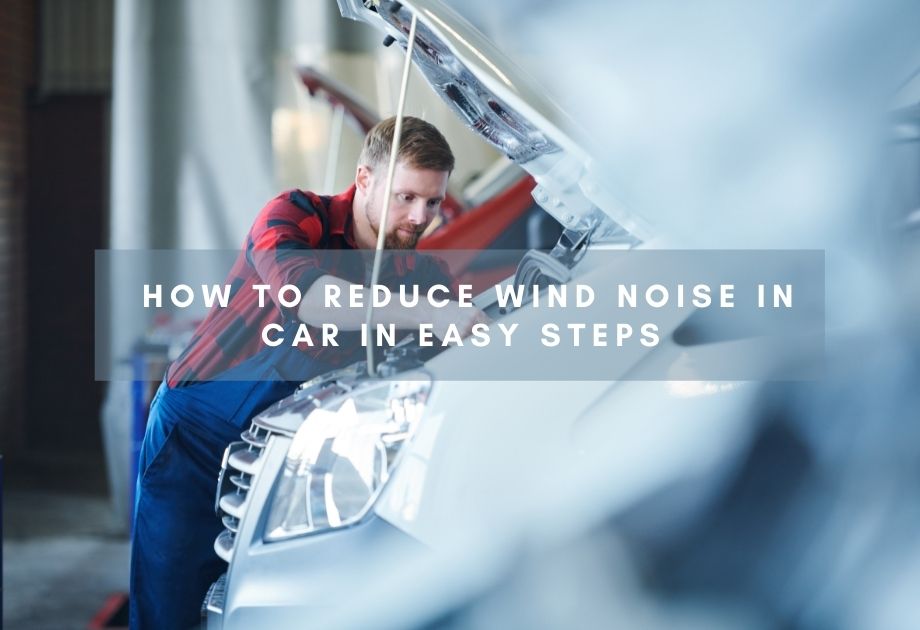

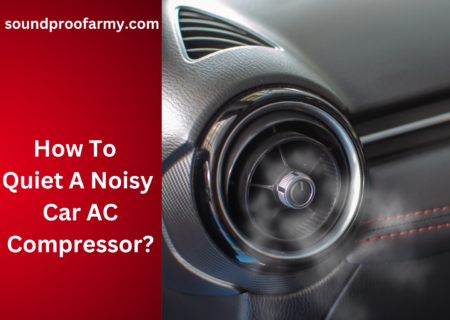
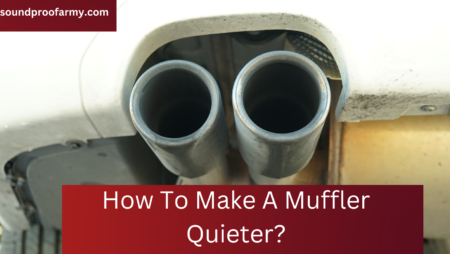
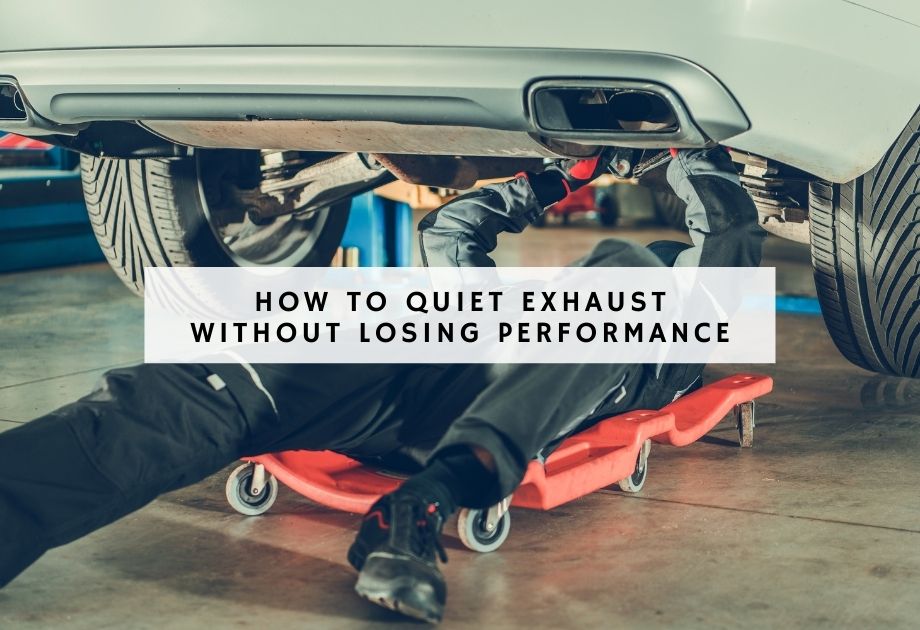
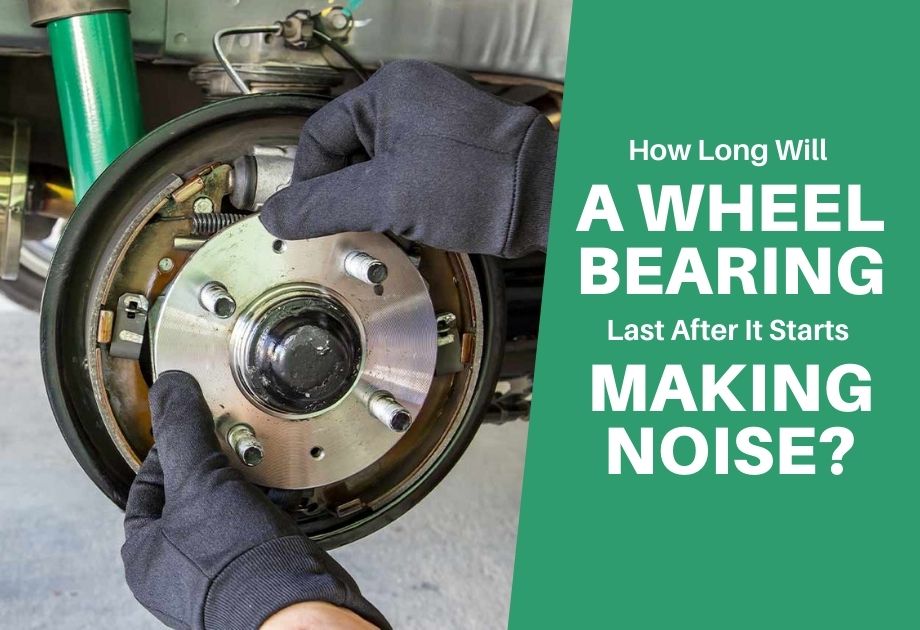

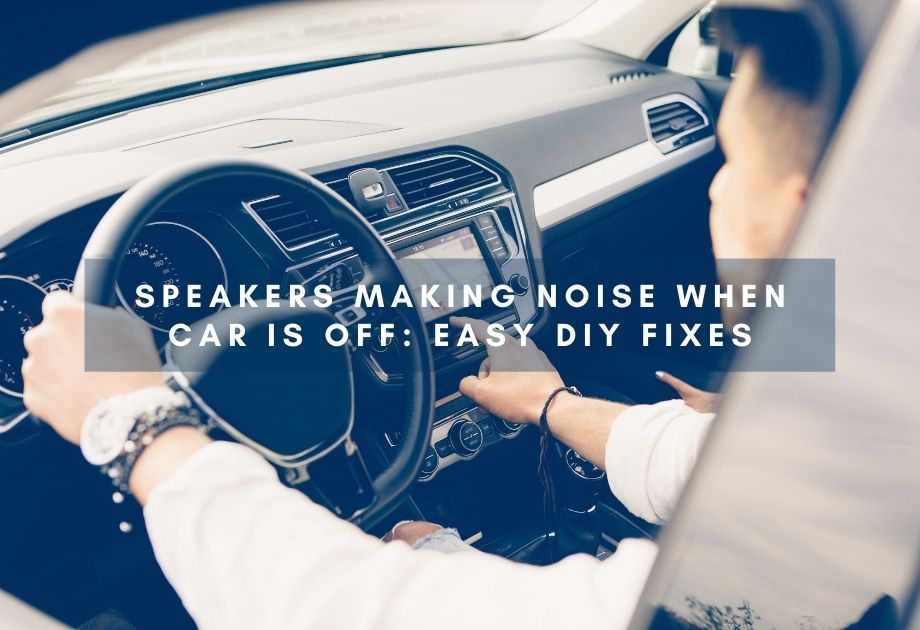
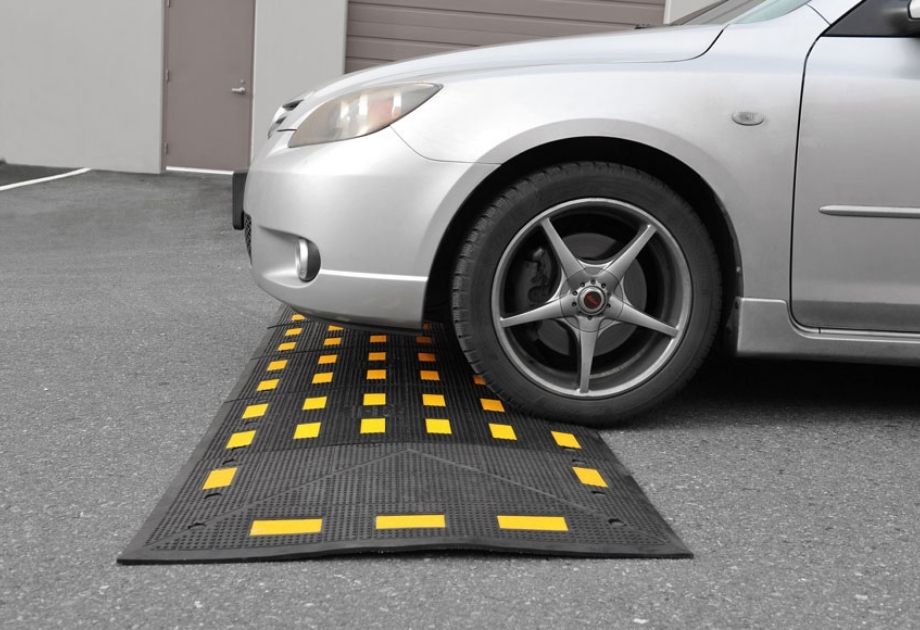
![How to Make an Air Compressor Quiet [8 Easy Steps]](https://soundproofarmy.com/wp-content/uploads/2021/06/8-Easy-Steps-on-How-to-Make-an-Air-Compressor-Quiet.jpg)

